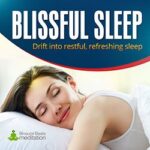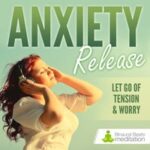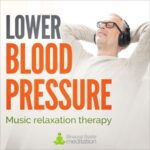Scientists have known for some time that music can have a measurable effect on acute and chronic pain.
Music triggers the release of opioids in the brain, which are the body's own ‘morphine'.
Meditation music, in particular, triggers the release of the brain chemical dopamine, a compound strongly associated with other rewarding and motivating stimuli, such as food, sex, and certain addictive drugs.
This explains the potential music has to reduce the feeling of pain. And the good news is that the pain reduction doesn't cease once the music stops because the opioid release takes time to wear off.
Working from this basic principle, we have developed Pain Relief – a highly effective composition that utilizes special frequencies proven to relieve pain.
Binaural Beats Music for Pain Relief
Due to the use of specific frequencies designed to alter the brain's perception and reaction to pain, binaural beats music has been shown in numerous studies to be a highly effective pain management tool.
Here is an overview of two significant studies.
Study 1:
In a study involving adults with various types of chronic pain, researchers examined the impact of Theta binaural beats on pain severity over 14 consecutive days.
In addition to the Theta binaural beats, a placebo was administered. This meant that the patients were unaware of whether they were listening to the actual binaural beats track or the sham intervention.
The participants were instructed to listen for 20 minutes per day.
An analysis of the results indicated a significant effect of the binaural beats intervention in reducing perceived pain severity. The binaural beats intervention outperformed the placebo by 77%.
The authors of the study concluded:
The results supported the hypothesis that an external audio protocol of TBB was effective in reducing perceived pain severity for participants (1).
Study 2:
In another double-blind, randomized, cross-over study, 5 Hz binaural beats (in the theta rhythm) were administered for a duration of 30 minutes. This was done while simultaneously recording electroencephalogram (EEG) readings.
The study then compared the effects of this stimulation to a sham stimulation. Following the initial session, chronic pain patients were given the freedom to use the treatment liberally on demand for a week.
The study concluded that when compared to the sham stimulation the binaural beats reduced pain intensity, stress and analgesic use in chronic pain patients.
The study authors also noted that the study offers compelling evidence that binaural beats have the potential to reduce pain intensity, both in the short term and over a longer period (with on-demand usage for one week).
Additionally, the significant decrease in analgesic medication consumption observed in the daily lives of chronic pain patients indicates that binaural beats can serve as a valuable adjunct to existing pain therapies, enhancing their effectiveness (2).
How Our Pain Relief Music Works
In the previously mentioned studies, the tracks employed Theta binaural beats. However, our Pain Relief track goes deeper by using Delta frequencies to achieve even more effective results.
The track begins at 12 Hz, making its way down through the Alpha and Theta states, before arriving at 2.5 Hz (Delta), a frequency known to stimulate the release of endogenous opiates and induce a profoundly relaxed state of mind. This deep level of relaxation further contributes to pain relief and enhances the overall therapeutic experience.
In addition to the binaural beats frequencies, the music in the track is tuned to a frequency of 174 Hz. This frequency is derived from the ancient Solfeggio scale, regarded by sound therapists and healers as a natural anesthetic that diminishes pain and promotes the optimal functioning of the body's organs.
This dual-pronged frequency approach makes for a highly-effective, natural pain relief and pain management tool.
How to Use this Pain Relief Music
This program is designed for regular, daily use and is suitable for individuals experiencing mild to chronic pain.
Whether you're dealing with a slight headache or recovering from a sprained ankle, or even managing more complex conditions like fibromyalgia, this music can be incorporated alongside your existing medical care, medications, and rehabilitation efforts.
To begin, simply find a comfortable position, either sitting or lying down, close your eyes, relax, and press play.
It is important to note that you may become drowsy and potentially fall asleep during or after listening to the program. For your safety, refrain from driving or operating machinery while using this product.
Download now and start relieving your pain with this safe, natural therapy.
——
Please Note: If you are currently experiencing pain, it is essential to consult a physician for appropriate medical advice. This music is intended to complement hospital care and medication, rather than serve as a substitute.








